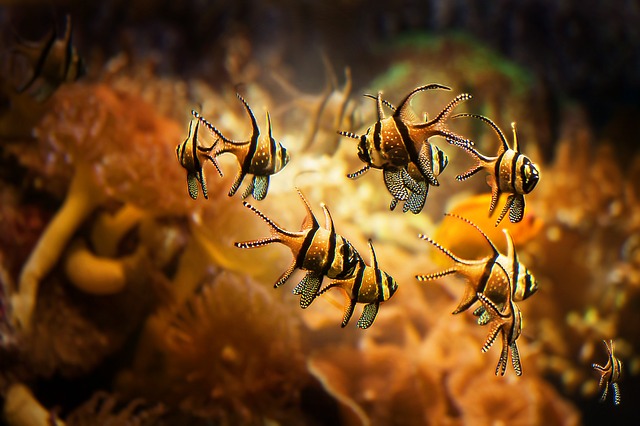Engineers at the University of San Diego have unveiled the first prototype of a tiny robotic fish capable of delivering drugs and cleaning up toxins inside the human body.
The chemically powered, magnetically controlled swimmers are called “microfish.”
The microscopic swimmers have “complex geometric structures and are smaller than the width a human hair,” said Wei Zhu, a nanengineering PhD student at UC San Diego.
We have developed an entirely new method to engineer nature-inspired microscopic swimmers that have complex geometric structures and are smaller than the width of a human hair. With this method, we can easily integrate different functions inside these tiny robotic swimmers for a broad spectrum of applications.
The fish were manufactured using a new 3D printing, according to Gizmodo.
The team from UCSC printed the microfish using microscale continuous optical printing (uCOP), a technology they designed in the lab. The technology relies on an optical chip with approximately two million micromirrors, and each mirror is individually controlled to project UV light onto a photosensitive material that solidifies on exposure. Using this chip, the engineers are able to print hundreds of 120-micron-long, 30-micron-thick robot fish at a time.
Gizmag tells us the microfish are not the first micro-sized robots to be developed by engineers. Others include the magnetically levitating microbots, which hover in the air under control of a magnetic field; laser-powered air-bubble microbots; and robotic micro-scallops which propel themselves the same as their namesake.
What makes the microfish different from other microbots is the ease in which they are created, and the sophistication of what they are capable of. The uCOP used to fabricate the fish bots can be redesigned by engineers to experiment with bird, manta ray, and shark shapes by tweaking a few things in the custom-designed computer-aided design program.
Researchers have tested the microfish and concluded the tiny bots can seek out toxins and remove them. They also believe the microfish can also be used to deliver drugs and for environmental conservation.
With all of the advancements being made in technology, the subject of self-aware robots remains a hot topic in the scientific community. Earlier this month, a letter signed by Elon Musk and Stephen Hawking warned of the dangers of artificial intelligence for mankind.
























